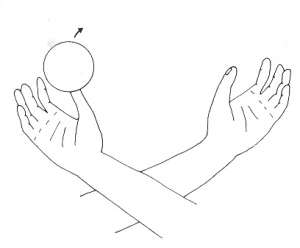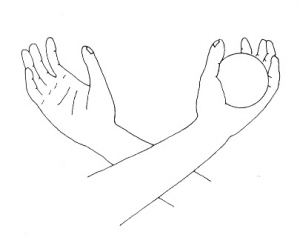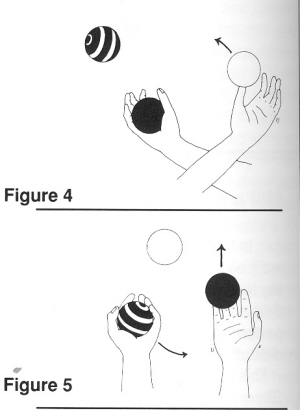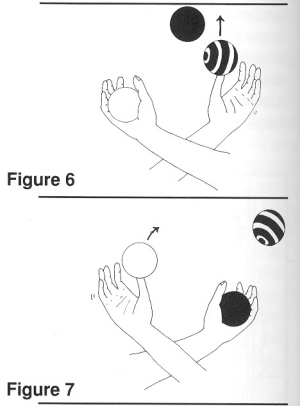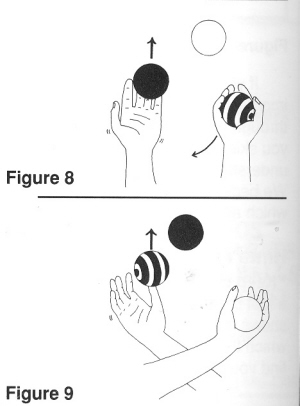|
The
Transition Move The
transition move will let
Throw
the ball from your crossed right hand {over} your
Throw
the ball back in the same way: it goes over the spear, Mill's
Mess Explained Now
we're up to our goal. To do Mill's Mess, you just alternate between
the clockwise and the counter-clockwise false showers, using the above
transition move to change directions.
Begin
by doing a counterclockwise false shower. This pattern should be
very comfortable to you by now. Notice that your right hand is making
all of its catches on the left side.
When
you're ready, do a transition move starting with your right hand. Just
take a ball caught by the right hand on the left side and throw it
over the top from the left to the right, then uncross and recross your
hands as we practiced in the transition move above.
If
you only do one transition move, you will find that you have changed
the direction of your false shower. Now do a transition move starting
with your left hand. Keep changing the direction of your false shower.
When you can change from one direction to the other continuously,
without actually staying in a false shower, you are doing Mill's Mess. Mill's
Mess Pictorial
Figures
4 through 9 show Mill's Mess frame by frame. In each of these
drawings, the ball close to the hand has just been thrown and the ball
in the hand has just been caught. Notice that each hand cycles through
the three balls, but each ball has its own unique path:
The
white ball is thrown from a hand crossed on top, to the other
hand, which is now crossed on top. This is the transition move.
The
dark ball is thrown straight up from an uncrossed hand and caught
by a hand crossed on the bottom.
The
striped ball is thrown straight up from a hand crossed on the
bottom and caught by an uncrossed hand. One more observation:
Notice
that three balls in a row are thrown from the right side of the body
(Figs. 4, 5, 6) and are sent in a counter-clockwise direction. The
next three throws are from the left side of the body (Figs. 7, 8, 9)
and are sent in a clockwise direction. The pattern then repeats. This
is the false shower reversing after every three throws.
In
Conclusion... There's
nothing physically difficult about Mill's Mess. It's just confusing.
If you master the false shower in each direction, you should be able
to succeed with Mill's Mess. Play around with it, have fun, and sooner
or later it will start to make sense. Good luck! .:. If you have comments on Mill's Mess or other Workshop items, you can reach the editors at: Juggler's Workshop, Palo Alto, CA or give one of us a call. |
